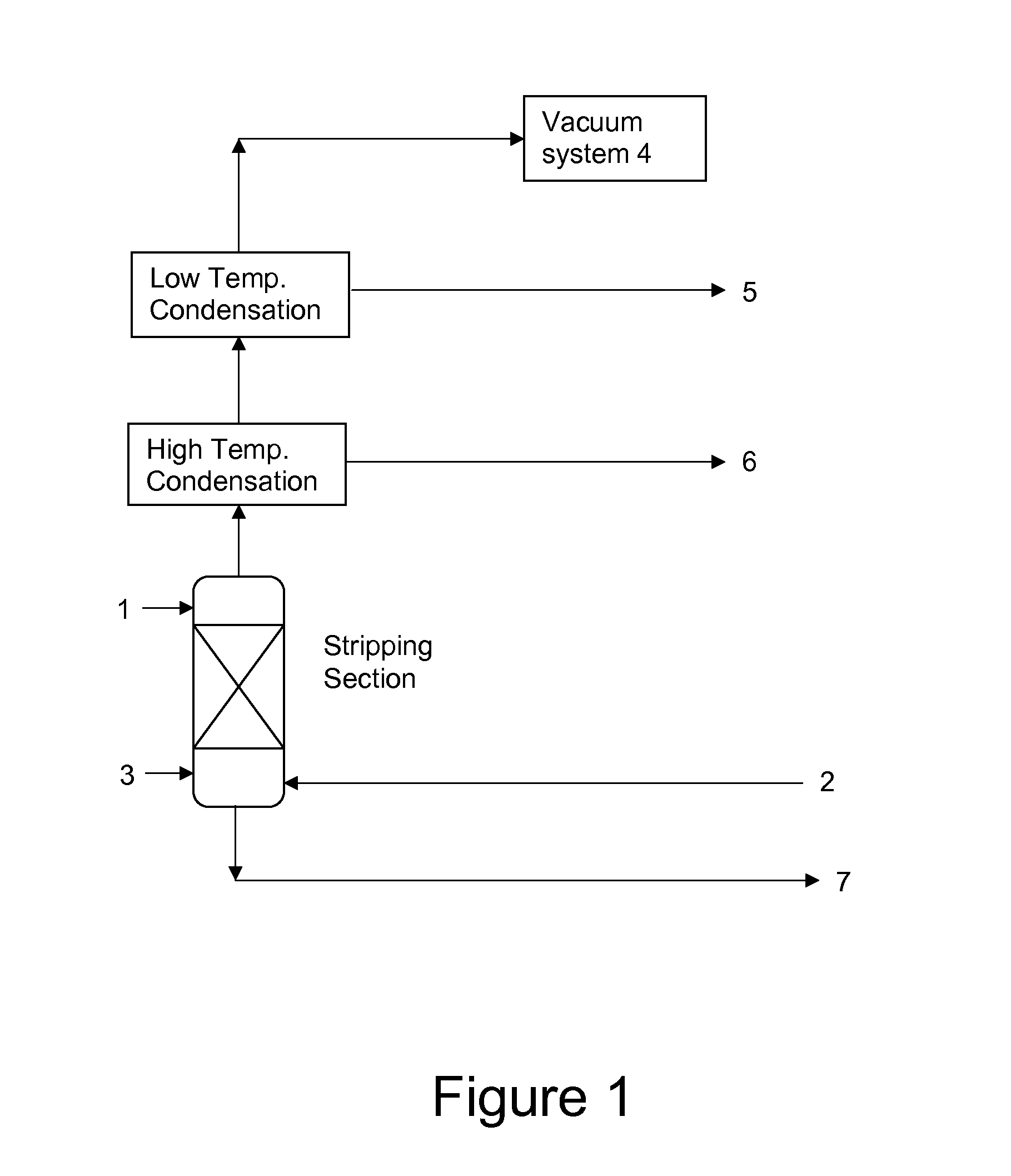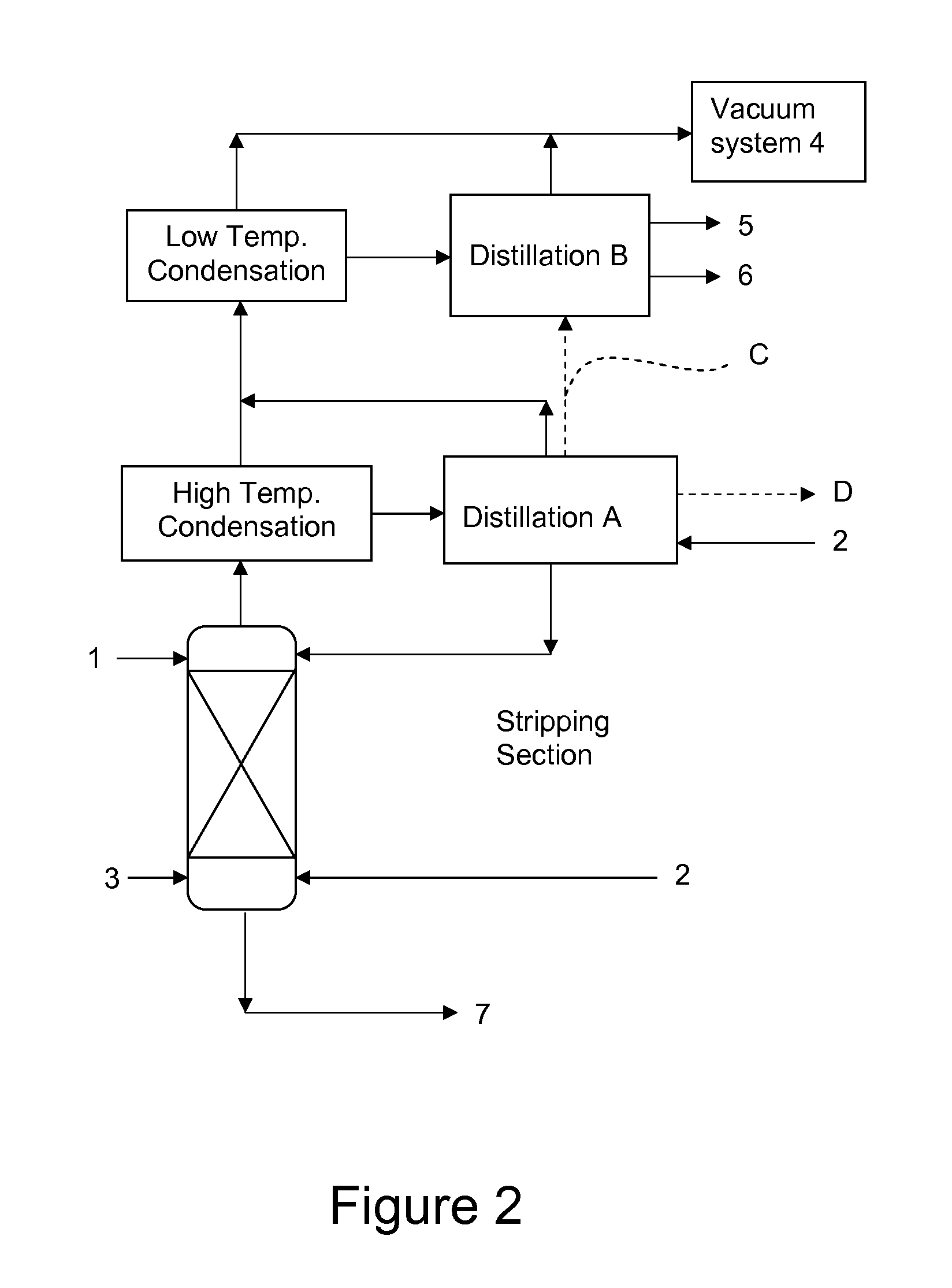Deacidification of fats and oils
- Summary
- Abstract
- Description
- Claims
- Application Information
AI Technical Summary
Benefits of technology
Problems solved by technology
Method used
Image
Examples
Embodiment Construction
(The Invention)
[0055]In Example 2 the stripping section and condensation stages were under the same temperatures and vacuum levels as in Example 1. The high temperature condensation stage was thus operated at 160° C. Distillation A was simulated with a column of 6 theoretical stages, the top stage (stage 1) being a partial condenser operating at 223° C. and 3 mbar, the feed coming into stage 3. Reboiler temperature was 260° C. To assist separation of micronutrients stripping steam amounting to 10% by weight of the hot scrubber condensate was added below stage 2, i.e. mixed with the vapors from the reboiler.
[0056]Distillation B was simulated with a column of 5 theoretical stages, the top stage being the condenser operating at the bubble point of the overhead product at 2.3 mbar, in this case 54° C. The column was specified to operate at a reflux ratio of 0.1 by weight, i.e. the reflux condensate from the condenser being 10% of the overhead product. The reboiler temperature was set su...
PUM
 Login to View More
Login to View More Abstract
Description
Claims
Application Information
 Login to View More
Login to View More - R&D Engineer
- R&D Manager
- IP Professional
- Industry Leading Data Capabilities
- Powerful AI technology
- Patent DNA Extraction
Browse by: Latest US Patents, China's latest patents, Technical Efficacy Thesaurus, Application Domain, Technology Topic, Popular Technical Reports.
© 2024 PatSnap. All rights reserved.Legal|Privacy policy|Modern Slavery Act Transparency Statement|Sitemap|About US| Contact US: help@patsnap.com










